


JOIN NOW
our Italian Cooking
Newsletter
our Italian Cooking
Newsletter


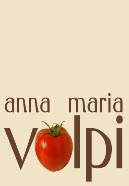




HOME PAGE >> Guest Cooks >>
Publication or use of pictures, recipes, articles, or any other material form my Web site, on or off-line without written permission from the author is prohibited. If you would like to use my articles on your Web site or in your publication, contact me for details. Avoid infringing copyright law and its consequences: read the article 7 Online Copyright Myths by Judith Kallos
Read our
DISCLAIMER and
PRIVACY POLICY
before using
our site
-------------------
Linking Policy
Advertise with us
DISCLAIMER and
PRIVACY POLICY
before using
our site
-
Advertise with us
Copyright © 2003 - 2011 Anna Maria Volpi - All Rights reserved.
Anna Maria's Open Kitchen Site Map
site map
recipes
policies
about us
Some More Hot Topics You'd Like to See adv.



Anna Maria Suggests
Extra-
The Best Selection of Italian Extra-
Buy from the source Authentic Aged Traditional Balsamic Vinegar from Italy
Sicily, Apulia, Lazio, Liguria, and More...The Best Selection of Succulent Italian Olives Oil
Infused Extra-
Spice up your dishes with Infused Flavored Italian Extra-
Place poppy seed and milk in a saucepan. Bring to a boil. Stir and cook for about 30 minutes until tender.
Butter an oven pan. Cut the roll in slices approximately 2 inch (5 cm) thick.
preparing the poppy seed
Drain the poppy seed in a colander lined with cheesecloth. Let the poppy seed drain for at least 1 hour or until dry
Pass the poppy seed through a fine meat grinder at least 3 times, until reduced to a fine paste.
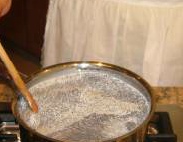


preparing the dough
In a bowl place about 1/2 cup flower, yeast, 1 teaspoon of the sugar, and the warm milk. Mix and set aside for about 5 minutes.
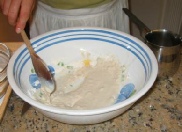
Stir in 1/4 of the flower, 1/3 of the sugar, and 2 eggs. Set aside for about 10 minutes.
Combine 1/4 of the flower, 1/3 of the sugar, and the 2 remaining eggs. Set aside for about 10 more minutes.
Stir in 1/4 of the flower, the rest of the sugar, melted butter, pinch of salt, and lemon rind. Add the remaining flour a little at the time.
With a spatula work the dough for about 8 – 10 minutes. Cover with plastic wrap, set aside to rise for about 30 minutes or until doubled in size.

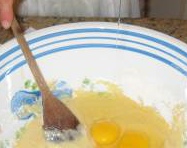
While the dough is rising, place the butter in a large saucepan, add the honey, and melt them together on low heat.
Add raisin, almonds, candied orange peel, and bring to a boil.
Add poppy seed. Combine, mixing continuously to prevent the compound from sticking to the pan. Cook for about 15 minutes, remove from heat and cool to room temperature.
assembling the cake
Preheat oven 350 F (180 C).
Transfer the dough to a work surface. Knead the dough for about 8 – 10 minutes, until smooth.
Flatten the dough with a rolling pin in a rectangular shape approximately 1/4 inch (5 mm) thick.
Preheat oven 350 F (180 C).
Transfer the dough to a work surface. Knead the dough for about 8 – 10 minutes, until smooth.
Flatten the dough with a rolling pin in a rectangular shape approximately 1/4 inch (5 mm) thick.

preparing the filling

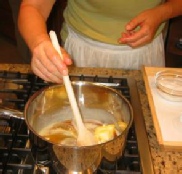
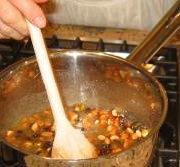

Before placing in the oven, brush the entire surface with the egg wash. Bake for about 45 minutes.
Prepare the icing beating together the powdered sugar and the milk. Pour the icing in a stream over the cake when still hot.

Pour the poppy seed mixture on the dough, in an even layer approximately 1/2 inch (1 cm) thick. Cut around the edges to make it even. Roll the dough on itself, closing the ends.


Place them upside down in the pan, side by side in a round pattern. Set aside to rise again for about 10 minutes.

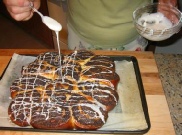
Beat together egg yolks and sugar until fluffy.
Stir in the vanilla.
Beat the egg whites until forming peaks.
Incorporate into the poppy seed mixture, first the egg yolks, then the egg whites, and finally the rum liquor.
Stir in the vanilla.
Beat the egg whites until forming peaks.
Incorporate into the poppy seed mixture, first the egg yolks, then the egg whites, and finally the rum liquor.

Makowiec (poppy seed cake)
Poppy Seed cake
Poppy Seed cake
Guest cook from Poland

Sour cream, dill, vodka, and cabbage-beet soups are from Russia; potato dishes come from Germany; the use of paprika as a spice is a Hungarian legacy.
Even Italy left a culinary influence, when in the 1500s, a Polish king married an Italian princess and she introduced tomatoes, oranges, olives, figs, and chestnuts to the country.
Polish cuisine has then developed into a unique blend of central European tastes, where you find side by side the sweet flavors of onion, cabbage, beet, potato; the sour tang of pickled vegetables, sour cream, sour cherries; smoked or boiled sausage; and Polish variations of international dishes like stuffed cabbage, pierogi (boiled dumplings), and savory potato pudding.
for the filling:
1 lb (450 gr) poppy seed
1 quart (1 liter) milk
1 1/2 stick (6 oz or 170 gr) butter
3/4 cup (180 cc) honey
5 oz (150 gr) raisin
3 oz (100 gr) almond, coarsely chopped
3 oz (100 gr) candied orange peel, finely diced
3 eggs, separated
1 teaspoons vanilla
2 tablespoons rum liquor
1 lb (450 gr) poppy seed
1 quart (1 liter) milk
1 1/2 stick (6 oz or 170 gr) butter
3/4 cup (180 cc) honey
5 oz (150 gr) raisin
3 oz (100 gr) almond, coarsely chopped
3 oz (100 gr) candied orange peel, finely diced
3 eggs, separated
1 teaspoons vanilla
2 tablespoons rum liquor
Margo is a superb cook. I had the privilege of experiencing the quality and the generosity of her food many times. At her dinner table I have tasted the best of Polish home cooking. It is difficult to believe today that Margo hated cooking when she was young, and she disliked working in the kitchen.
Her conversion started after she got married and she had to deal with a hungry husband. Finally she realized that she needed her mother’s help. And help arrived in the form of a small notebook. Margo’s mother received it from her mother, and she already added many pages to it. The notebook came with the backing of an extended family of aunts and cousins all ready to assist and teach. Today Margo keeps this little treasure jealously close and she adds her own recipes and experiences to it.
Margo has a particular passion and ability for baking. For the festivities it’s a profusion of different desserts: layered cakes, plum cakes, babka (soft and flavorful risen cake), her famous “porcupine cake” covered with almonds, and the classic Makowiec (poppy seed cake).
This classic Polish dessert is always baked at Christmas and Easter, but fortunately throughout the year as well. Made with aromatic dough and a generous amount of poppy seed, Makowiec filling is a mouth-watering mixture of cooked and ground poppy seeds, honey, orange peel, and raisins. The top of the cake is then glazed with powder-sugar icing. Once you try it, you will be addicted forever because the aroma and taste are memorable.
As Polish people say at the start to any meal: Smacznego! Enjoy!
POLISH FOOD is hearty, simple, and flavorful. Like all ethnic cuisines Polish cooking carries the mark of the geography and history of the country: Lithuania, Russia, Hungary, and Germany have all given their contribution.
for the dough:
1 lb (450 gr) all purpose flour
1 teaspoon active dry yeast
1/2 cup (100 gr) sugar
1/2 cup (120 cc) milk, warm
4 eggs
4 oz (110 gr) butter, melted
pinch of salt
zest of 1 lemon grated
for finishing:
1 egg for egg wash
2 cups powdered sugar
1/4 cup (60 cc) milk
1 lb (450 gr) all purpose flour
1 teaspoon active dry yeast
1/2 cup (100 gr) sugar
1/2 cup (120 cc) milk, warm
4 eggs
4 oz (110 gr) butter, melted
pinch of salt
zest of 1 lemon grated
for finishing:
1 egg for egg wash
2 cups powdered sugar
1/4 cup (60 cc) milk
Margo Maszkiewicz

Mizeria
See also
by Margo
by Margo
